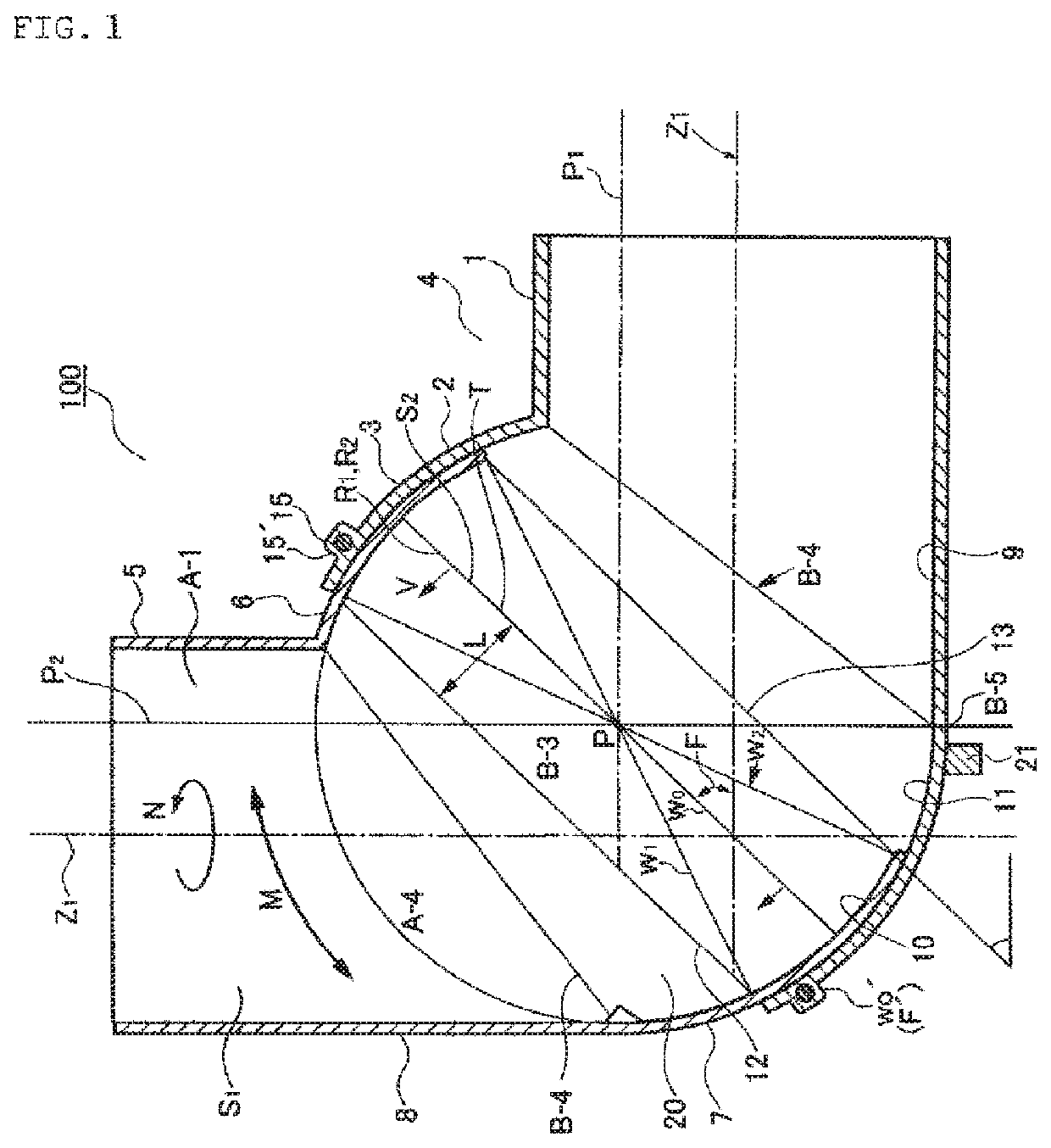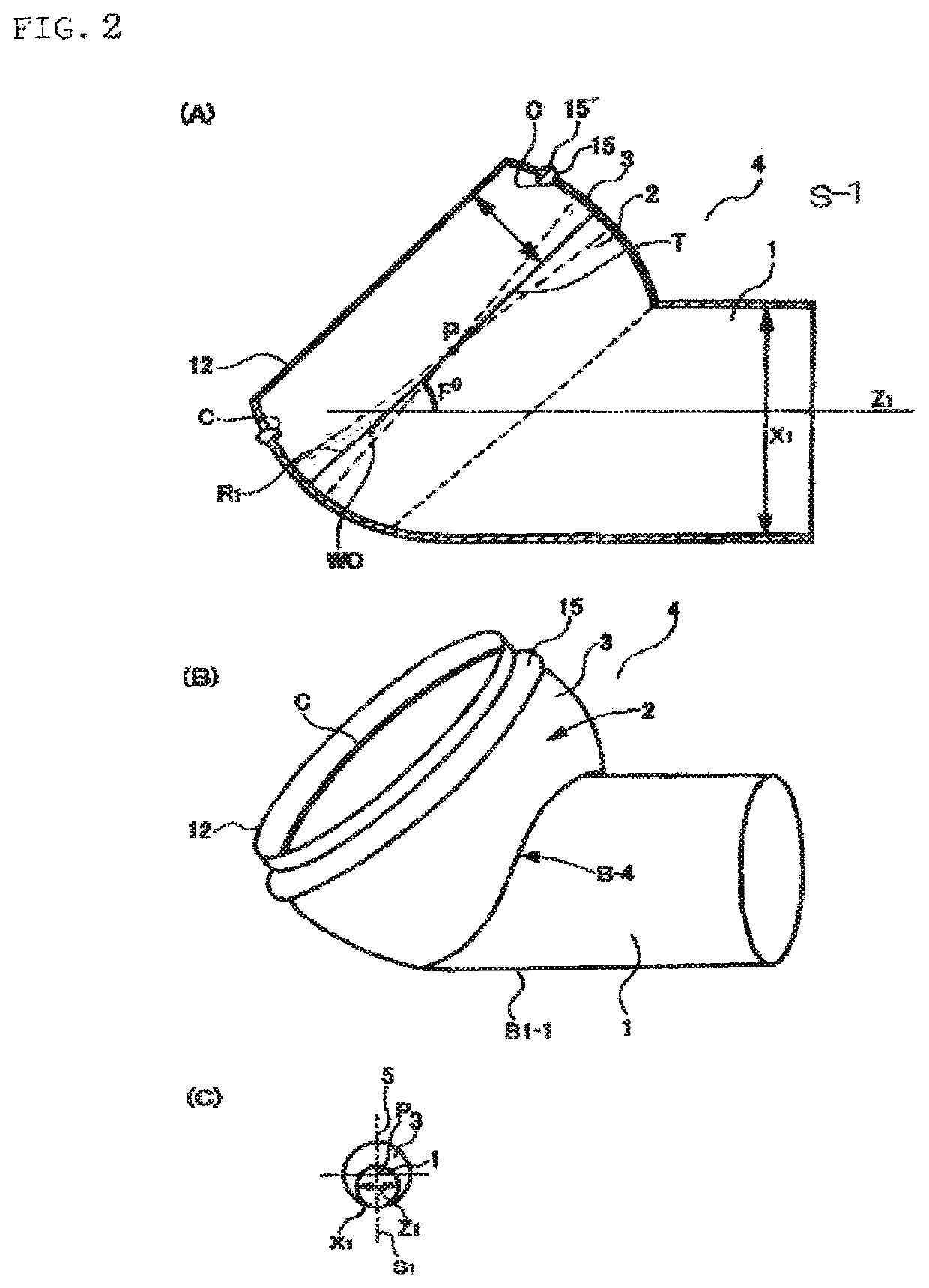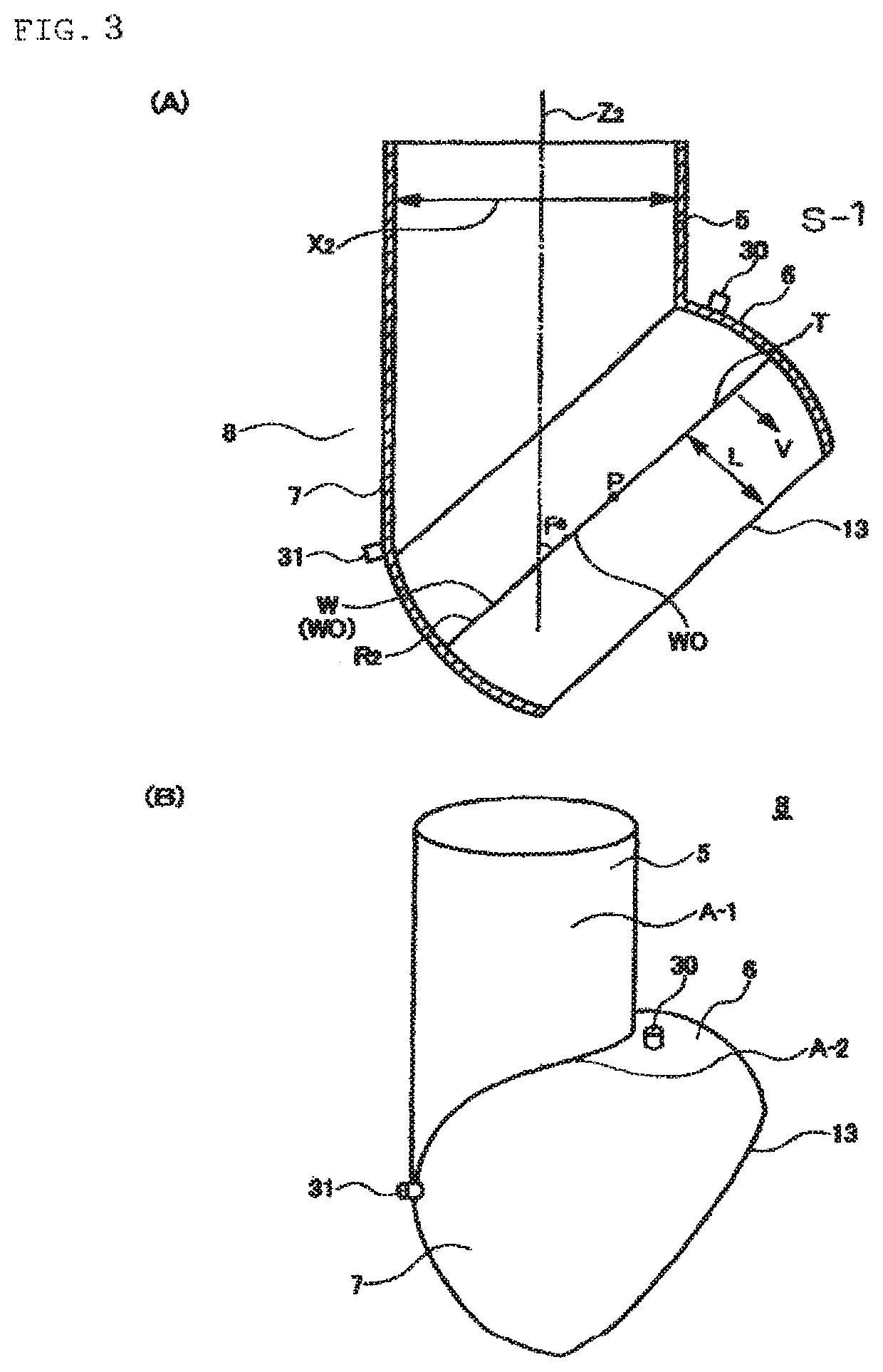However, since the elbow pipe is a pipe joint having a fixed bent angle of 90° or the like, this is a difficult work due to decentering (decentering angle) of the coupling direction, and the work may not be appropriately performed only using a single elbow pipe.
However, since the bellows pipe has minute unevenness on its inner surface, flow resistance increases, and it is difficult to achieve a smooth flow of the indoor air.
In particular, if the bellows pipe is employed as an external pipe for a range hood that discharges the contaminated air generated during cooking to the outdoor, oil and fat contents contained in the contaminated air continually collide with a convex portion of the minute unevenness, so that oil and fat contents may be piled in the pipe.
This is undesirable in terms of fire prevention.
However, the pipe mount space is typically limited to a very narrow passage in order to reduce a construction cost.
However, although elbow pipes are produced from many manufacturers, a bending angle of such an elbow pipe is limited to a particular angle predetermined by manufacturers, such as 45°, 75°, 90°, and 180°.
Therefore, it is difficult to set the curved angle of the coupled pipes to a certain angle even by combining various types of elbow pipes.
Furthermore, even when a user tries to obtain a predetermined curved angle by combining a plurality of elbow pipes, a significant space is necessary around a pipe group including the elbow pipe in such a coupling portion.
Therefore, it is difficult to substantially set a predetermined slope or angle by combining a plurality of elbow pipes inside the narrow pipe layer set in advance.
However, in such a bendable elbow pipe joint, a connectable bending angle between a pair of straight pipes is limited to a small range of about 10° to 20°.
Therefore, such a bendable elbow pipe is not substantially usable in practice.
Therefore, in the background art, it is nearly impossible to implement a predefined slope according to the building construction standards in all pipe layers.
Therefore, it is difficult to set a predetermined slope of the liquid pipe in many portions.
Accordingly, a maintenance cost increases disadvantageously.
In appearance, this may be seen as the piping complies with the relating regulations regarding the slope, and such cheating occurs frequently.
For such an unlawful piping work, naturally, sludge may remain in the pipe, or an excessive load may be continually applied to the pipe for a long time.
Therefore, durability of a pipe system is remarkably degraded, and this becomes a social issue.
Such a problem also occurs in a plurality of connection portions provided in a plurality of pipes extending from a subterranean part of the detached housing or a high-rise housing to the sewerage main manhole.
Furthermore, in the connection portion of the pipe using an elbow pipe of the background art, the elbow pipe portion and the straight pipe portion fastened to the elbow pipe are just simply fitted, and do not have flexibility, so that a coupling strength is low.
If a large vibration such as an earthquake is applied, the fitting portion between the elbow pipe and the straight pipe may be broken or removed from each other.
In some cases, necessary gases or liquids may leak, so that a secondary disaster may occur dangerously.
Therefore, it is difficult to sufficiently absorb a vibration such as an earthquake, and vibration resistance performance is unsatisfactory, so that the articulation assembly may be broken disadvantageously.
In this configuration, it is impossible to provide sufficient freedom in a bending angle between least two straight pipe portions to be connected, and the universal joint is used only as a connection joint in a very small part.
Therefore, practicality is short in reality.
Therefore, Patent Literature 2 fails to satisfy an enablement requirement.
Therefore, in this state of the description, it is difficult to specify an arrangement position and an arrangement shape of the reference plane.
Accordingly, Patent Literature 2 fails to serve as an effective disclosure for any later technique.
Therefore, even a person ordinarily skilled in the art would be impossible to manufacture the universal joint in an industrial sense from the technique of Patent Literature 2.
In other words, Patent Literature 2 fails to discuss or suggest a novel and inventive technique concept capable of addressing the aforementioned problems of the background art.
Therefore, it is difficult to say that an overlappingly fitting portion between the opening edge of the outer spherical body and the opening edge of the inner spherical body has an area or a length remarkably larger than those of the background art.
Accordingly, there is no description regarding a fact that the bending angle formed by a pair of connected straight portions increases compared to the background art, and it is difficult to guarantee such a fact.
In addition, it is inevitable to think that the coupling portion may be highly possibly disassembled or damaged by a vibration such as an earthquake.
That is, both Patent Literatures 1 and 2 fail to perfectly disclose or suggest necessary technical information for addressing problems of the background art.
However, a ratio of the outer sphere covering the inner sphere is extremely large, and a variable angle range between the straight pipe portions is significantly small.
Therefore, practicality is short.
Therefore, it is difficult to perform such manual operation in a construction site, and work efficiency is significantly degraded.
Furthermore, since fluid stays inside, practicality is short.
 Login to View More
Login to View More  Login to View More
Login to View More 


